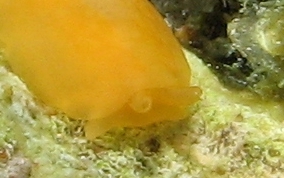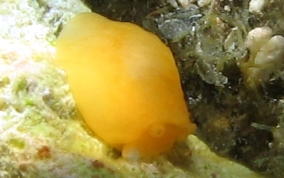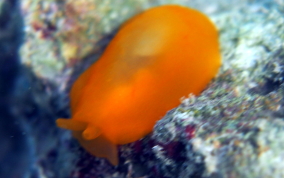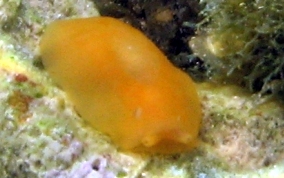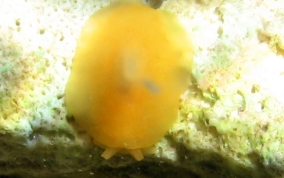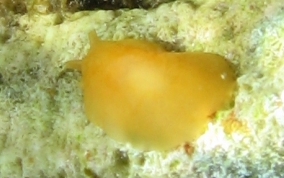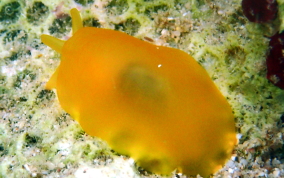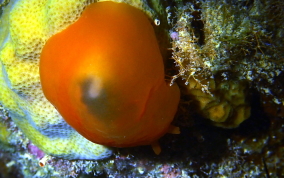Apricot Sidegill Slug
Berthellina quadridens / Berthellina engeliThe frontal pictures give you an idea why this slug is called "Side Gill". You can find them in flat sandy areas attached to the bottoms of rocks. They are quite small, one or two inches in length when stretched out for traveling. It is believed that they like to eat sponges, but may also feed on coral polyps and sea anemones. If you turn over rocks, you may also disturb brittle stars, baby urchins, tube spaghetti worms and other organisms. Be gentle and replace the rocks after you have observed what's attached. (Trying not to crush anything when you put it back.) Life under rocks is small, but important to the ecosystem they live in and help support.
